SHOULD WE AS CREATIONISTS WORRY ABOUT Tiktaalik roseae?
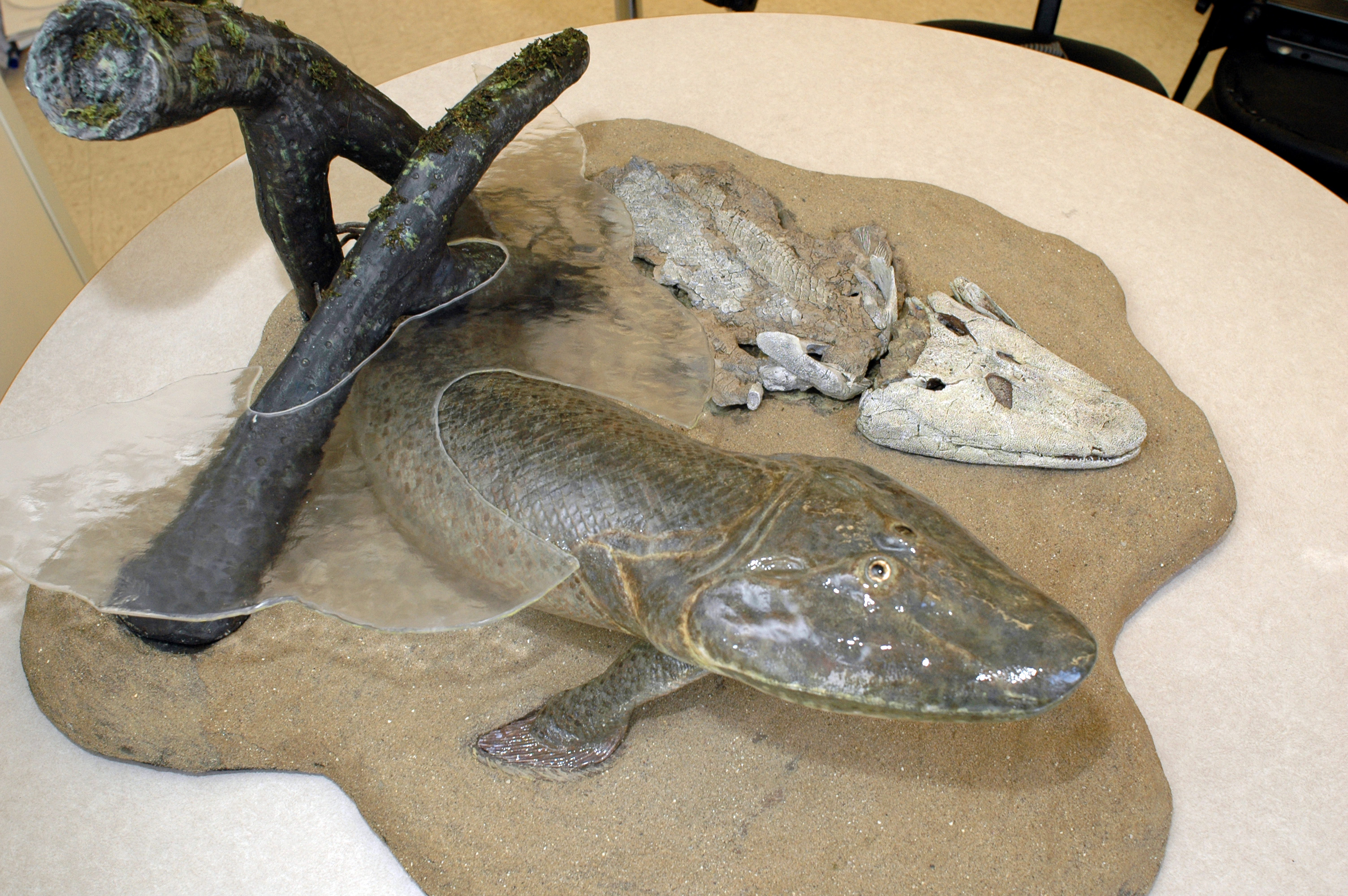
SHOULD WE AS CREATIONISTS WORRY ABOUT
Tiktaalik roseae?
By Michael K. Farrar, O.D.
© God’s Breath Publications
Having a Bachelor of Science degree in Biology with a minor in Chemistry for my undergraduate education I’ve always been interested in almost all areas of science. I am especially intrigued by Paleontology, the study of fossil plants and animals. So I thought I would share something in the area of Paleontology as it relates to Creationism and Evolution.
Some time ago the New York Times reported that scientists had discovered fossils of a 375-million-year-old fish. This was apparently a large scaly creature not known to exist until now. It is theorized to be a long-sought missing link in the evolution of some fishes from water to a life of four limbs on land. A team led by Neil H. Shubin of the University of Chicago; say they have uncovered well-preserved skeletons of the fossil fish in sediments of former streams in the Canadian Arctic, 600 miles from the North Pole. The skeletons have the fins, scales and other attributes of a giant fish, four to nine feet long. On closer examination, the scientists found telling anatomical traits of a transitional creature, a fish that is still a fish but has a structure that could be interpreted, according to the theory of evolution, as changes that anticipate the emergence of land animals, and thus is a predecessor of amphibians, reptiles and dinosaurs, mammals and eventually humans. The name chosen for this creature is Tiktaalik roseae.
So is this the one of the missing links that scientists will use to prove the theory of evolution? Does this chip away at the faith of those who believe God created the universe and all that it contains? How should Christians handle such information?
To respond to these questions we must first understand what is; true science. Science is knowledge gathered through repeatable and verified experimentation. It is the practice of discovering truth in an orderly fashion and recording that truth so that others can repeatedly verify it. Science in its purest form is not in opposition to the Bible, faith in God or belief in creationism. Science can be applied “inappropriately” though in the form of Scientism.
Scientism is the belief that theories and postulations about what is true can be accepted as truth without following the scientific method which involves verification through specialized and controlled scientific experimentation. Scientism can promote theories (guesses about experimentation or observations) as factual without honoring the scientific method. How can science morph into scientism?
To answer this question we must understand that all of us interpret information and evidence based on our own specific assumptions. Let’s say a fossil such as Tiktaalik roseae is found. One person assuming that God does not exist might make the assumption that evolution would be a most reasonable explanation to evaluate the fossil evidence. Assuming that simple creatures evolved over long periods of time into more complex creatures they would conclude that this fossilized fish represents a link in their theory of evolution. It would be fine to communicate this information as long as it was within the context of a “theory.” The problem is Scientism would go one step further and state such a “theory” as “fact.” Thus science in the form of Scientism becomes a religion based on the faith of the person in naturalistic processes unproven by the scientific method.
On the other hand a person believing in God and having faith that God created every living thing would approach the discovery of a fossilized Tiktaalik roseae in a different manner. This person believing that God is the ultimate Creator would make the assumption that any fossilized creature represents evidence of God’s creative work. They would assume that in evaluating such a fossil they would see His design or fingerprint contained in the fossilized evidence. Therefore their conclusion is that such a fossil illustrates divine creation and God’s creativity in making diverse creatures some who survive and some who do not as God ordains. But we must remember a “Creationist” conclusion is also a “theory.” Therefore Creationism is faith-based just as is Scientism.
Both of the individuals we have discussed must remember that true pure science deals with repeatable experimentation upon which a hypothesis can be made and out of which come theories. Scientific law results when repeatable experimentation results in information and/or facts that are beyond doubt and can be duplicated over and over again with the same result. The problem with paleontology (the study of fossilized creatures) is that we are dealing with historical information that is incomplete and does not allow for repeatable experimentation. Therefore issues of faith result. Different personal beliefs drive differing assumptions. Different assumptions will lead to alternative conclusions. Depending on the personal beliefs of a paleontologist finding the fossils various conclusions will be drawn.
Currently the fossilized evidence of Tiktaalik roseae is incomplete. Scientists are still unable to determine what the hind fins and tail might have looked like. While evolutionary paleontologists are promoting this as a “missing link” other conservative scientists are more cautious in their response.
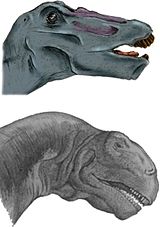
There is always concern about jumping to conclusions over fossil evidence. The best known of the dinosaurs, Brontosaurus, was always pictured as a snub-nosed behemoth. From science textbooks to dictionary and encyclopedias the pictures of this dinosaur always pictured its head shape in the same fashion. Museums reflected this in their skeleton exhibits as well. Then a mistake was discovered in the late 1970s. Two men sifting through racks of fossilized bones and documentation determined that all the pictures and skeletal exhibits had the wrong head on the dinosaur. The true head actually had a long snout and spiky, pencil-like teeth. This was quite embarrassing for paleontologists and museum curators as well. The pictures have now been changed and the skeleton exhibits redone. We must be careful how much we trust our interpretation of the fossil record and the accuracy with which we reconstruct such fossils.
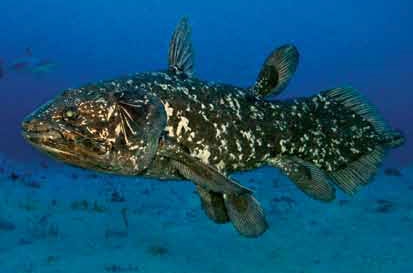
I am currently reminded of the discovery of what we might call a “living” fossil, the lobed-finned fish called the Coelacanth. It was discovered off the coast of South Africa in 1938. This fish was believed to have been extinct and was used as an index fossil to date sedimentary strata of rocks to millions of years. When a living one was found it caused scientists to rethink their theories of interpreting fossils. It challenged evolutionary paleontologists in their efforts to promote theories as fact especially when an exception can be found.
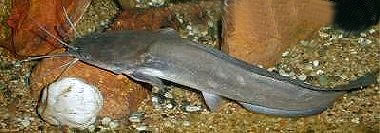
Another “living” fish that might give us some perspective on viewing Tiktaalik roseae’s discovery is Clarias batrachus or “walking catfish.” This is a freshwater fish living today in Africa, the Middle East and Asia. It possesses long, rather stiff fins that assist it in traveling out of water over land. It does this by wriggling its body to propel itself forward, using its strong pectoral spines to push on, and breathing via its skin and arborescent organ. It looks like we already have a “walking fish” that lives today that fulfills the desires of those who are looking for a fossil walking fish as a transitional life form.
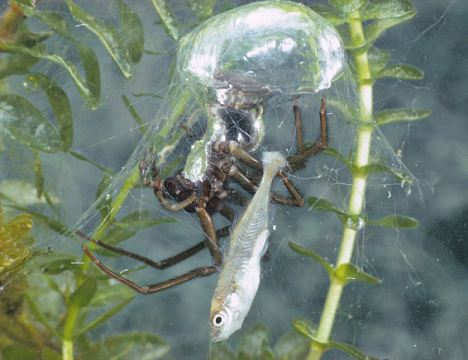
Other conundrums for scientists of an evolutionary viewpoint include the Argyroneta aquatica or Diving Bell Spider. This spider lives completely under water. All spiders breathe air, so how does a spider that lives under water breathe? The Diving Bell Spider constructs from silk a diving bell that it attaches to an underwater plant. The spider collects air in a thin layer around its body, trapped by the dense hairs on its abdomen and legs. It transports this air to its diving bell to replenish the air supply in the bell. This allows the spider to remain in the bell for long periods, where it waits for its prey. The spider is found in ponds in Europe, northern Asia, and Africa north of the Sahara desert. If you are an evolutionist you would ask yourself the question; “How many spiders had to die in the evolutionary process to develop such a creation, or if you are a creationist; did God simply create it this way?”

The Bombardier Beetle (Metrius contractus) is another unique creation of God. It has a defense system that is a cross between a tear gas canister and a Tommy gun. When the beetle senses danger, it internally mixes enzymes contained in one body chamber with concentrated solutions of some rather harmless compounds, hydrogen peroxide and hydroquinones, confined to a second chamber. This generates a noxious spray of caustic benzoquinones, which explodes from its body at a boiling 2120F. The fluid is pumped through twin rear nozzles, which can be rotated, like a B-17’s gun turret, to hit a hungry ant or frog with bull’s-eye accuracy. Where is the evolutionary development here? Possibly God just created it this way?

Finally we must consider the perplexing Platypus (Ornithorhynchus anatinus). It is considered a mammal because it is a warm-blooded vertebrate, covered with hair, and possesses mammary glands which it uses to nourish its young. The curiosity is that it does not give birth to live young as most mammals do instead it lays eggs. The young must break out of their eggs using an egg tooth. The Platypus has a bill for a nose that it uses to dig in the mud for food. It has spurs on its hind feet that deliver poisonous venom that is powerful enough to make a person sick or kill a dog. God must have a sense of humor for sure.
We should not be worried about scientific discoveries that question our faith. Evolutionary conclusions are based on assumptions that arise out of personal beliefs. We must remind ourselves, and others, that evolution is one possible “theory” among many, another one of which is creationism.
Genesis 1:1
“In the beginning God created the heavens and the earth.”
Nehemiah 9:6
“You alone are the LORD. You made the heavens, even the highest heavens, and all their starry host, the earth and all that is on it, the seas and all that is in them. You give life to everything, and the multitudes of heaven worship you.”